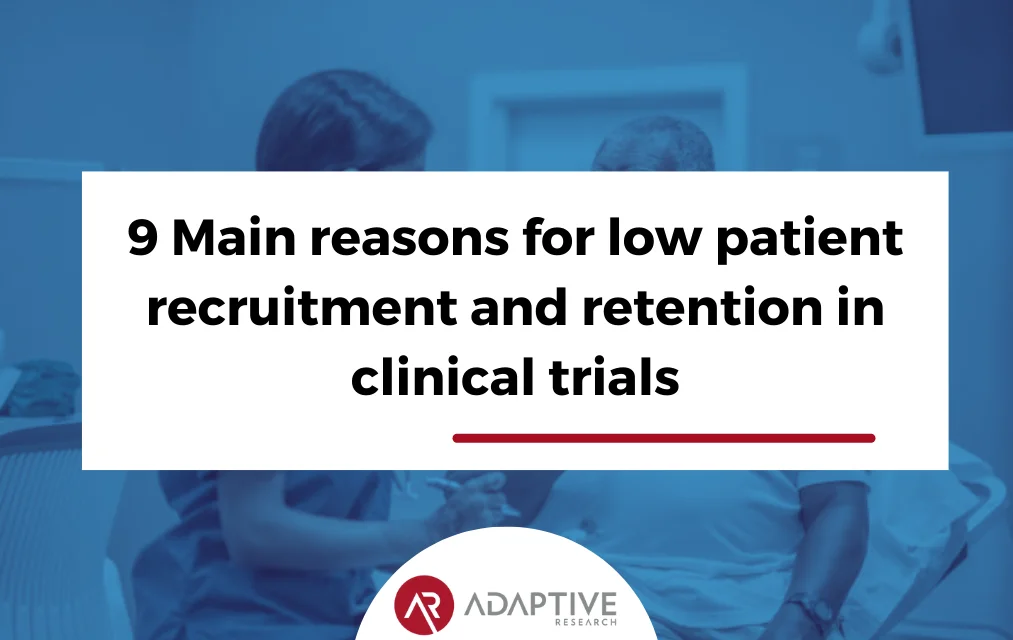9 Main reasons for low patient recruitment and retention in clinical trials
Adequate patient enrollment and retention are critical to the successful execution of a clinical trial. But, they are among the most demanding variables to control, with the average dropout rate across all clinical trials hitting around 30%. Even though patients are free to drop out from any clinical trial, this hinders new medical inventions. On average, it costs $6,533 to recruit a patient to a clinical study, and the average cost of recruiting a new patient if one is lost due to noncompliance is $19,533. In this blog, we explain why it's challenging to find people to participate in clinical trials and why they leave before accomplishing their intended purpose. What are the 9 major reasons for low patient recruitment and retention in clinical trials? 1. Covid 19 has worsened the difficulties of trial participant recruitment and retention. The challenges of trial participant recruitment and reservation have been intensified by COVID-19. Researchers point to patients’ heightened unwillingness to enroll in new trials, patient dropout, and noncompliance linked to travel restrictions and quarantined locations. Based on a study organized by Continuum Clinical, 39% of sites surveyed in the USA stated they believe trial participants will be much less or a bit less likely to join the newest clinical research trials. Other considerations include elevated patient anxiety, hesitancy to visit healthcare facilities, and contamination risk between patients, sites, and the community. 2. Failure to see and appreciate the value of clinical trials due to personal reasons Suppose a patient feels like a number rather than an individual making a meaningful contribution to the clinical trial. In that case, they are most likely to drop out or hesitate to participate in future clinical trials. Most people are reluctant to participate in clinical trials because of the complex and highly demanding protocols they entail.…




